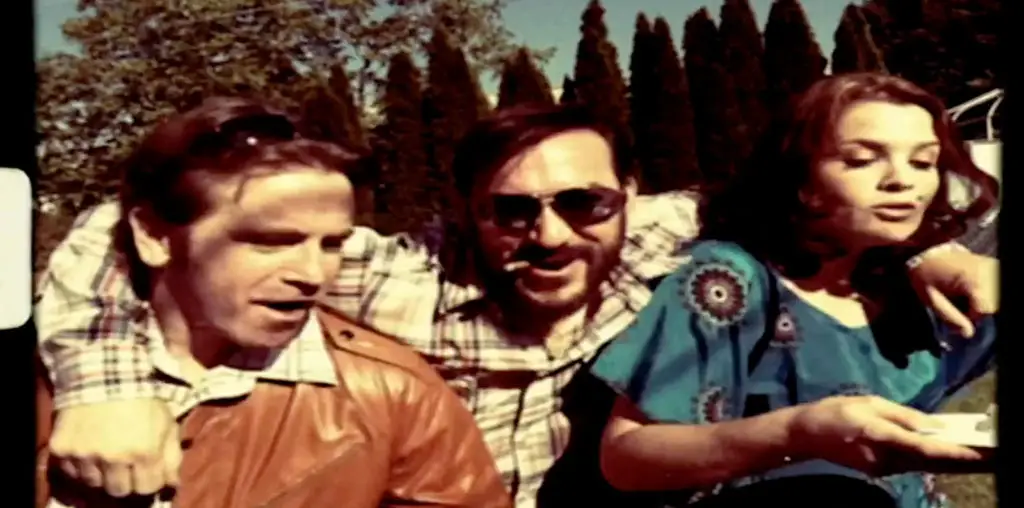
BOOTLEG FILES 256 “Dirty Gertie from Harlem U.S.A.” (1946 all-black drama starring Francine Everett).
LAST SEEN: Available for viewing on a few video web sites.
AMERICAN HOME VIDEO: Only on labels offering public domain dupes.
REASON FOR BOOTLEG STATUS: A lapsed copyright.
CHANCES OF SEEING A COMMERCIAL DVD RELEASE : Since the original materials appear to be lost, it seems unlikely.
During the first half of the 20th century, a parallel cinematic universe existed on the fringes of the Hollywood orbit. This was the universe of the so-called “race films” – movies with all-black casts that were made solely for exhibition in theaters catering to African Americans. These films were cheaply made by independent companies and, to be frank, most of them weren’t very good. But whatever they lacked in artistic value, they more than compensated at a sociological level. Whereas Hollywood only saw African Americans as being capable of playing servants and menial parts, the race films enabled African Americans to play a wide range of prestigious and challenging roles.
However, while the race films had an all-black population on camera, behind the camera they were mostly created by all-white talent. While some black-owned production companies existed in the silent film era, but the sound era only the legendary Oscar Micheaux was able to keep his black-owned business functioning. But when Micheaux went on hiatus in 1940, the race films were strictly a white-run business – until Spencer Williams came along.
Williams began his career behind the camera back in the late 1920s, snagging bit parts in movies (most notably Buster Keaton’s “Steamboat Bill, Jr.”) and creating scripts for the early two-reel talkies produced by Al Christie’s independent comedy studios. The Christie films were all-black burlesques that relied heavily on malapropism and the perceived pretensions of upwardly mobile African-Americans trying to secure middle class standards. These films were not particularly amusing in their day and are painful to endure now, but at least they got Williams into movies. From there, Williams continued acting in race films before penning two screenplays in 1939, the all-black Western “Harlem Rides the Range” and the horror-comedy “Son of Ingagi.”
In 1941, for reasons that do not remain clear, Williams was invited by Alfred Sack, whose company Sack Amusement Enterprises acquired race films for states rights release to the segregated theaters in the South. Sack brought Williams to Texas with the astonishing offer of writing and directing his own films. It was a generous offer at all levels – except for the financial element. Beginning with “The Blood of Jesus” in 1941, Williams began to write and direct (and occasionally act) in his own films.
But Williams’ race films flew so far under the radar that was able to pull off a funny bit of intellectual property misappropriation in 1946 by creating an unofficial remake of W. Somerset Maugham’s classic drama “Rain.” Renaming the property as “Dirty Gertie from Harlem U.S.A.” and switching around the characters’ names and settings, Williams was able to bring Maugham’s work to the all-black screen without having to bother with those nasty old royalty payments.
In case you are wondering about the film’s eponymous character, she didn’t get her name because of inadequate personal hygiene. Dirty Gertie is Gertie LaRue, a New York singer with a habit of loving and dumping men. Having overplayed her hand with her Harlem boyfriend, she makes a fast break to the Caribbean island of “Rinidad,” where she meets up with a mostly fun crowd. Gertie enjoys the attention of a sailor and a Marine stationed on the island (she nicknames them “Tight Pockets” and “High Pants”).
Other men around the hotel where Gertie lives and works in a cabaret revue are also smitten with her seductive charms. There is a sourpuss evangelical who disapproves of Gertie’s act (though he may be secretly infatuated by her obvious charms). But when her old boyfriend shows up on the island, Gertie realizes that her days are numbered.
“Dirty Gertie from Harlem U.S.A.” is no one’s idea of a great movie. The film’s production values are painfully threadbare, the screenplay is patchy, and the much-anticipated revue number that is the focus of much of the film’s dialogue is brief and clumsy. The film also has one of the strangest casting decisions of all time: Williams, for reasons that remain obscure to this day, opted to cast himself as a female fortune teller who predicts Gertie’s doom. The site of the burly and butch Williams in gypsy drag (while speaking in his natural masculine voice) is thoroughly astonishing.
But to its credit, the film has one major asset going for it: its extraordinary star, Francine Everett as Dirty Gertie.
Everett first attracted notice in the early 1930s as an actress with the Federal Theater in Harlem, a Depression-era program sponsored by President Roosevelt’s Works Progress Administration. She married actor Rex Ingram, who had his own career good fortune in 1936 by being cast as the lead in the all-black Warner Brothers film “Green Pastures.” Everett moved with her husband to Hollywood, but found her career choices to be severely limited. She declined an offer to play an angel in “Green Pastures” and would not consider playing a maid in Hollywood films (that was the occupational pigeonhole facing black actresses in that day). Stifled in Hollywood and unhappy in her marriage, she divorced Ingram in 1939 and returned to Harlem, where she became the star in the local black theater and race film productions. Everett’s beauty and musical prowess also allowed her to find work as a model and a singer. At the peak of her fame, Everett was dubbed “the most beautiful woman in Harlem” by columnist Billy Rowe in The Amsterdam News, New York’s leading black-owned newspaper.
For “Dirty Gertie,” Everett left Harlem and traveled to Dallas, where Williams created his films. For his part, having a star of Everett’s magnitude was a major coup – Williams’ films were, up to that part, mostly cast with nonprofessional talent (and it showed). In this film, Everett shined with an effervescent vibrancy – her stunning beauty, incredible poise and ability to spin Williams’ leaden script into passionate gold presented a once-in-a-lifetime performance. Indeed, Everett outshone the other actresses who starred in earlier official film versions of “Rain,” Gloria Swanson and Joan Crawford.
For Everett, though, “Dirty Gertie” represented both a career peak and the start of her career’s end – this was her final starring role in a race film. After making “Dirty Gertie,” she tried to find a new opening in postwar Hollywood, where the studios were beginning to offer a more intelligent view of the nation’s race relations. Alas, the studios had no place for a glamourous black leading lady and Everett only scored bit parts in “Lost Boundaries” (1949) and “No Way Out” (1950) – the latter film being notable for launching Sidney Poitier’s career.
After her film work dried up, Everett quietly retired from show business and found work in a clerical position at a New York hospital. For years, she labored anonymously, half-forgotten by the black audiences who once saw her shows and films and completely unknown to white audiences that never heard of the race films. It would not be until the 1970s that a serious scholarly review of these films were taken and wider audiences were able to appreciate productions such as “Dirty Gertie.”
This film, as with nearly all of the surviving race films, are in the public domain. It appears the original materials for “Dirty Gertie” vanished ages ago, so all that remains are crappy duped prints that have been bootlegged endlessly. But even with this unfortunate circumstance, “Dirty Gertie” and its glamourous star can still be appreciated. This may not have been much of a film, but she was quite a woman!
IMPORTANT NOTICE: The unauthorized duplication and distribution of copyright-protected material, either for crass commercial purposes or profit-free s***s and giggles, is not something that the entertainment industry appreciates. On occasion, law enforcement personnel boost their arrest quotas by collaring cheery cinephiles engaged in such activities. So if you are going to copy and distribute bootleg videos and DVDs, a word to the wise: don’t get caught. Oddly, the purchase and ownership of bootleg videos is perfectly legal. Go figure!


As a youth in Houston, Tx in the 50s I remember the race films vividly. We relished the fact of seeing people of color in any manner on screen at that time, no matter how small the role or stereotyped. Mantan Moreland, Spencer Williams and many others were heroes of the day. We loved Amos and Andy when it finally came to television. We overlooked the stereotypes to see our people. I’ve worked in Hollywood starting with All In the Family, The Jeffersons, Good Times, Different Strokes and later on Martin, Moesha and The Parkers among others. Hollywood is still lacking in it’s employment of blacks in film and television to this day! I recently worked on How I Met Your Mother and was the only black person on the production!